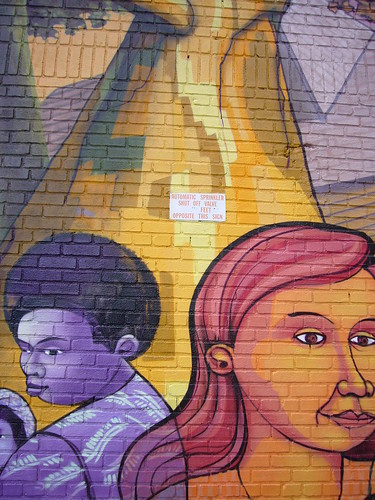 A blog about abandoned spaces and urban life doesn't necessarily scream product placement. Nonetheless, I had a few items on my holiday wish list this year, and my family gave me some cool gifts, so expect a few informal reviews in the coming weeks.
A blog about abandoned spaces and urban life doesn't necessarily scream product placement. Nonetheless, I had a few items on my holiday wish list this year, and my family gave me some cool gifts, so expect a few informal reviews in the coming weeks. For example, one gift I received was The History Channel's DVD set Cities of the Underworld: The Complete Season One. The season's 13 episodes are on four DVDs, and so far I've watched two episodes from DVD #2, "City of Caves" and "New York."
Even though all of the locations are wonderful, I'd most like to explore Budapest's caves. (Am I partial to this fantasy because my family is part Hungarian? Yes.) In "City of Caves", geological and geographical talk of tectonic shifts and pressure per square foot leads to an exploration of a natural cave with a good looking male urban explorer ("It's like just a playground," he declares) and a visit to a WWII cave hospital 60 feet below ground, part of the natural cave system but retrofitted several times for varying purposes. A discussion on Budapest's bathing culture leads to an old tunnel below Gellert Square and the (literal) heat of the "Gate of Hell," which appealed to my sweat-loving self.
The "New York" episode is on the same disc, and although the sites have been covered in other media, it's still an interesting watch. I especially liked the point of view that ran throughout the entire episode, stated exactly as such: "New York couldn't have ever developed into the metropolis it is today without the underworld that supports it" and "The world up above couldn't exist without the one down here".
Places visited in the episode are Grand Central Terminal's M42, the Croton Aqueduct, and the World Trade Center's "bathtub", so the structural mix is diverse. As the guide and the host approach track 102, the guide "demands" (for the viewer, no doubt) that the camera be turned off, as the location is top secret. This obvious attempt at suspense worked wonders with me, as my train home from Manhattan often leaves from track 103. As I contemplated whether or not the entrance to M42 was near track 102 (my guess is that it's not), my tongue wagged like a dog with curiousity and interest.
Julia Solis leads the cameras in the Croton Aqueduct segment. (In full disclosure, Urban Landscaped has a professional and personal affiliation with Solis.) I've had the pleasure of walking in a portion of the Old Aqueduct, and the part I was in had albino bats on the walls and lacked the inner "boardwalk" entrance. In other words, it was a bit rougher and more adventurous. (Another disclosure: I was the PR person involved in a Cities of the Underworld Croton Aqueduct segment filmed at my work, located where New York City's main reservoir once was. That segment didn't make the final cut.)
The "bathtub" segment was last, and its facts and diagrams were captivating, particularly in its post-9/11 relevance. An article about the bathtub can be found here; additional information is here.
Cities of the Underground occassionally repeats on The History Channel, although recently it's the "Beneath Vesuvuis" episode that's been on repeat. The episodes I'm most likely to view next from the DVD set are "Scotland's Sin City" and "Freemason Underground". A new season starts airing on January 28 at 9 p.m. with an episode about Jerusalem's "Underground Apocalypse".

No comments:
Post a Comment